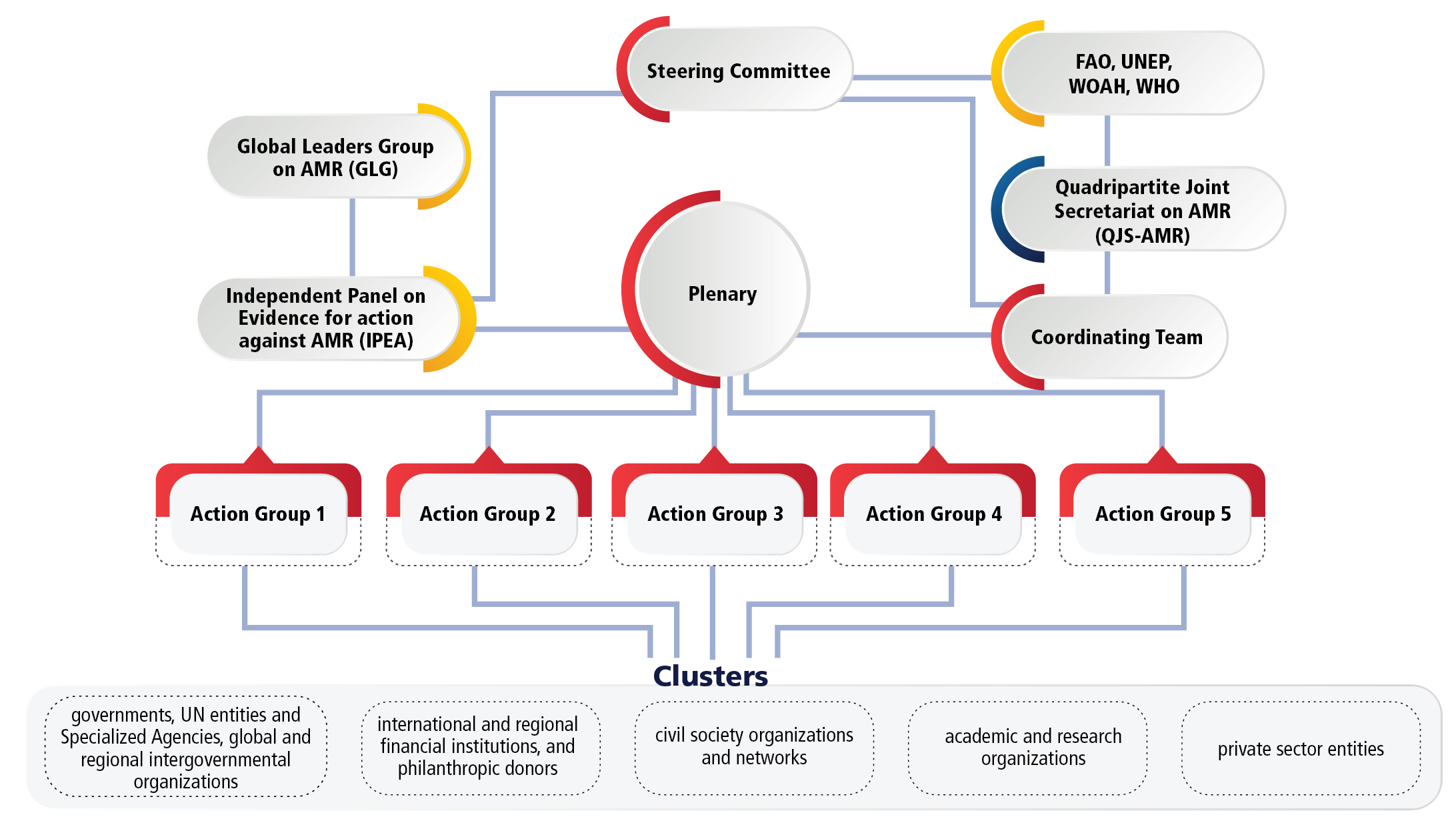Explore
AMR a global threat?
Antimicrobials,[1] including antibiotics, antivirals, antifungals and antiparasitics, play a crucial role in preventing and treating infections and diseases in humans, animals and plants. Their over-use and misuse in people, animals and plants is the main driver of antimicrobial resistance (AMR).[2] Poor sanitation, inadequate infection prevention and control practices, as well as a lack of access to clean water aggravate the issue by facilitating the spread of treatment-resistant microbes. As a result, AMR threatens global public health, food safety, food security and economic prosperity, as well as planetary biodiversity and ecosystems.
AMR is a multi-faceted global challenge, known as the “silent pandemic”. It is recognized as one of the top 10 global public health threats to humanity in the twenty-first century. It requires greater coordination, political leadership, interdisciplinary and multisectoral targeted actions by all of society to safeguard planetary health (human, animal, plant and environmental) and to deliver on the Global Action Plan (GAP), National Action Plans on AMR (NAPs) and, ultimately, the 2030 Agenda for Sustainable Development.
The 2016 Political Declaration of the High-level Meeting of the United Nations General Assembly on Antimicrobial Resistance was a landmark in advancing the world’s commitment to tackling AMR, calling for greater urgency and action in response to its many challenges. In it, Member States asked the Secretary-General, in consultation with the Food and Agriculture Organization of the United Nations (FAO), the World Organisation for Animal Health (WOAH) and the World Health Organization (WHO), to convene an ad hoc inter-agency coordination group (IACG), co-chaired by the Executive Office of the Secretary-General and the Director-General of WHO, to provide practical guidance on approaches to ensure sustained, effective global action to address AMR. The IACG subsequently produced a report in which experts recommended the establishment of the AMR global governance structures, such as the One Health Global Leaders’ Group on AMR(GLG), the Independent Panel on Evidence for Action against AMR (IPEA) and the AMR Multi-Stakeholder Partnership Platform.
The power of partnerships for enhanced global governance of AMR and One Health
The collaboration between the Food and Agriculture Organization of the United Nations (FAO), the United Nations Environment Programme (UNEP), the World Health Organization (WHO and the World Organisation for Animal Health (WOAH) – known as Quadripartite – on AMR and One Health is strong and sound. The cooperation began in 2019 but was formalized in a memorandum of understanding on 17 March 2022, when UNEP officially joined forces with the other three agencies. The Quadripartite solid cooperation framework provides a roadmap for the four organizations to tackle challenges at the human–animal–plant–ecosystems interface using a more integrated and coordinated approach.
The Quadripartite Strategic Framework for collaboration on antimicrobial resistance sets out an ambitious vision, to preserve antimicrobial efficacy and ensure sustainable and equitable access to antimicrobials for responsible and prudent use in human, animal and plant health, thus contributing to the achievement of the Sustainable Development Goals.
The establishment of the AMR Multi-Stakeholder Partnership Platform is a Quadripartite response to the recommendation in the IACG report, No time to wait: Securing the future from drug-resistant infections, to “establish a constituency-based partnership platform to develop and work towards a shared global vision, goals and coordinated action on AMR”.
The Platform’s vision and objectives
The Platform is an inclusive, international and multi-stakeholder venue that brings together actors across the human–animal–plant–environmental interface to assist in preserving antimicrobials as lifesaving medicines and ensuring their responsible use under a One Health approach. It is a voluntary, collaborative coordination mechanism established by the Quadripartite to catalyse a global movement for action against AMR, to contribute to the implementation of the GAP and country NAPs. It will be achieved through the following:
- Promoting a shared vision for action to tackle AMR: Engaging stakeholders across the human–animal–plant–environmental interface to build a global vision, narrative and targets for actions to tackle AMR.
- Information-sharing and networking: Providing a venue for information-sharing and collaboration to reach a common understanding and enable coordination of activities between the different sectors.
- Support concrete actions that substantially advance progress in containing, combating and, ultimately, reversing AMR: Drawing on advice and evidence from relevant global governance mechanisms and other academic and scientific institutions to identify and gain support for priority areas for action.
Governance
The Platform works to deliver on its objectives through the following structure.
See the Platform’s operational documents (terms of reference and operational rules) for more information.
[1] Antimicrobials are agents used to prevent, control and treat infectious diseases in humans, animals and plants. They include antibiotics, fungicides, antiviral agents and parasiticides. Disinfectants, antiseptics, other pharmaceuticals and natural products may also have antimicrobial properties.
[2] AMR occurs when bacteria, viruses, fungi and parasites no longer respond to antimicrobial agents. As a result of drug resistance, antibiotics and other antimicrobial agents become ineffective and infections become difficult or impossible to treat, increasing the risk of disease spread, severe illness and death.


